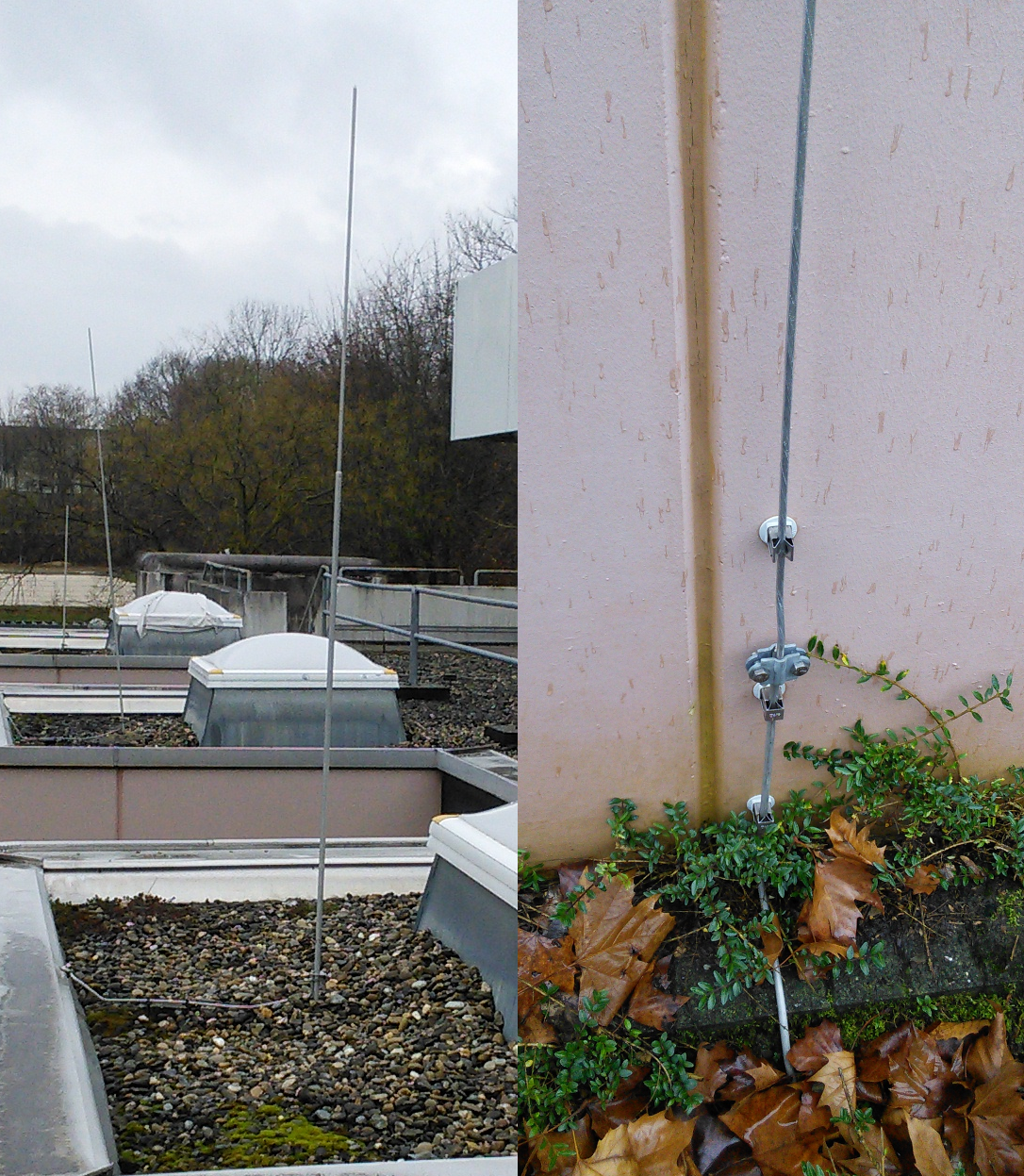Lightning Rod
The purpose of a lightning rod is to protect a building against lightning strikes. Lightning rods are basically thick
metal wires. They always start at the top of the roof and lead down the wall of the building into the ground.
The inventor of the lightning rod was the American Benjamin Franklin (1706−1790).
If a thunderbolt strikes a building, the electrical gadgets inside the house are in danger.
They can be destroyed because of the strong electrical current. Another potential danger comes from the high temperatures
of lightning bolts which can lead to house fire.
Lightning rods always are the highest point of a building. It "collects" the lightning bolts before they enter the building due to the so called "point effect".
The metal wire of lightning rods have a very weak electric
resistance
which makes them very good electric conductors.
Lightning bolts, just like any electric current, will always "look for" the path with the lowest resistance. That's why the bolt preferrs striking the lightning rod
instead of the building itself. The current of the bolt then flows through the wire down the walld of the house and into the ground.
In the picture you can see a lightning rod on a rooftop. In the picture on the right you can see the so-called grounding, the spot where the metal wire
leads down into the ground:

